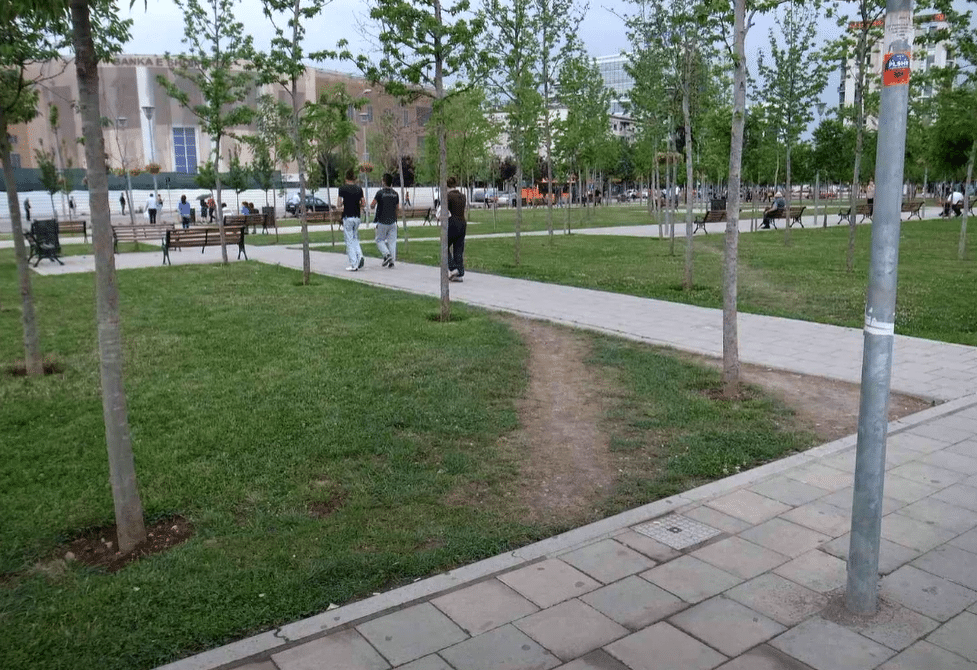
In the ever-evolving business world, finding the right product market fit is a make-or-break factor for the success of any venture. To achieve this alignment, entrepreneurs must understand and adapt to customer behavior, and embrace a mindset of continuous learning and iteration. Without doing so, you will find yourself creating less than optimal solutions that consumers will not change or adapt to.
In the picture to the side, you will notice that people have ignored the paved walkway in order to get to their destination easier. This is a great example of what’s called a desire path. In landscape engineering, desire paths are created by people naturally taking the most convenient and efficient routes, regardless of designated paths. Similarly, in the business environment, desire paths represent the most frictionless way for customers to achieve their desired outcomes. Recognizing and understanding these desire paths is crucial to find the best product market fit.

Product Fit: Asking What Do You Want?
To begin, entrepreneurs must deeply understand what customers truly desire. This involves conducting problem interviews to identify pain points, challenges, and unmet needs. Embrace a mindset of brutal intellectual honesty and focus on discovering the truth rather than clinging to preconceived notions. Love the pain, not the solution. By gaining a clear understanding of customer desires, you can shape your product or service to meet those needs effectively.
Market Fit: How Do You Want to Get It?
Once you understand what customers want, the next step is to identify the most suitable market fit. This entails conducting solution interviews to determine how customers prefer to access and utilize the product or service. Adapt your approach to align with customer behavior rather than expecting customers to change their behavior to fit your solution. Remember, failure to build what is desired will ultimately lead to failure in usage.
Problem Interviews and Solution Interviews:
Problem interviews focus on understanding customer pain points, motivations, and desires. Engage in active listening, ask open-ended questions, and dig deep to uncover underlying needs. Solution interviews, on the other hand, involve validating your product’s value proposition by seeking feedback on potential solutions. These interviews help refine your offering and ensure it aligns with customer expectations.
Ensure that your product or service follows those desire paths that have already been paved. Your failure to build what is desired will lead to failure in usage of your product; hence, the dirt paths signaling people ignoring the paved walkway. It’s proof that consumers will not adapt to poor solutions.

Problem Interviews and Solution Interviews:
Problem interviews focus on understanding customer pain points, motivations, and desires. Engage in active listening, ask open-ended questions, and dig deep to uncover underlying needs. Solution interviews, on the other hand, involve validating your product’s value proposition by seeking feedback on potential solutions. These interviews help refine your offering and ensure it aligns with customer expectations.
Ensure that your product or service follows those desire paths that have already been paved. Your failure to build what is desired will lead to failure in usage of your product; hence, the dirt paths signaling people ignoring the paved walkway. It’s proof that consumers will not adapt to poor solutions.
Embrace Iteration and Continuous Learning:
The journey to find the best product market fit is not a linear path. It requires constant iteration, feedback loops, and a willingness to adapt through the marketing process. Regularly test and refine your product based on customer feedback and behavior. Embrace the concept of “getting up in the balloon” – stepping back and gaining a holistic perspective, rather than getting lost in personal opinions or biases.
How to find the best product market fit is a challenging yet essential goal for any business. By understanding desire paths and customer behavior, entrepreneurs can pave the way to success. Embrace a mindset of continuous learning, iterate based on customer feedback, and remain open to discovering the truth. In the picture to the side, you’ll see a great example of Ohio State University successfully paving over the desire paths, making sustainable solutions for their community. Remember, the greatest chance of entrepreneurial success lies in knowing and following your customers’ desires. So, get out there, embrace the desire path, and let customer behavior guide you toward the perfect product/market fit.





No comment yet, add your voice below!